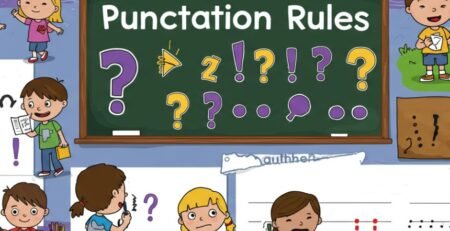Lesson Plan > Lesson 04 > Mathematics
Elementary Level: Number Comparisons (Greater, Less, Equal)
Mid Level: Rounding and Estimation (Whole Numbers)
High Level: Adding and Subtracking Integers
Elementary Level (Kinder to Grade 2) :
Subject : Number Comparisons (Greater, Less, Equal)
National Standards:
– Common Core State Standards: 1.NBT.B.3 Compare two two-digit numbers based on meanings of the tens and ones digits, recording the results of comparisons with the symbols >, =, and <.
– National Council of Teachers of Mathematics (NCTM) Standards: Understand meanings of operations and how they relate to one another.
Materials:
– Number cards (1-30)
– Greater than, less than, equal signs
– Sorting mats
– Interactive whiteboard or projector for charts
– Markers
– Small objects for sorting games
Warm-up:
Ask the children: “Can you think of a time when you had more of something than a friend, less of something, or the same amount?” Allow children to share their responses and lead into a discussion about comparing numbers.
Direct Instruction:
1. Introduce the greater than (>), less than (<), and equal (=) signs.
2. Show examples of comparing numbers using the symbols on the board.
3. Explain that when comparing numbers, the number with more digits is greater, the number with fewer digits is less, and if they have the same number of digits, they are equal.
Practice:
Have the children create their own comparison charts using markers and small objects to represent numbers. For example, they can draw two boxes labeled “greater than” and “less than” and use objects to represent numbers. This project-based activity allows children to apply their understanding of number comparisons in a creative way.
Closure:
To close the lesson, have children come together as a class to review what they have learned about comparing numbers. Provide examples for children to solve using the greater than, less than, or equal signs. This closure activity allows children to demonstrate their understanding of the lesson content.
Assessment:
For assessment, have children complete a worksheet where they compare number pairs using the greater than, less than, or equal signs. This will allow you to gauge their understanding of the concept of number comparisons.
Differentiation for Children with Special Needs:
– Provide visual aids, such as picture cues or manipulatives such as Spielgaben, to help children with special needs understand the concept of comparing numbers.
– Offer extra support for children who may struggle with recognizing the symbols for greater than, less than, and equal by providing additional practice opportunities.
– Allow children to work in pairs or small groups for added support and collaboration.
– Adapt the project-based independent practice activity to suit the needs of children with special needs, such as simplifying the task or providing extra support as needed.
Mid Level (Grade 3 to 5)
Subject :Rounding and Estimation (Whole Numbers)
National Standards:
– Common Core State Standard: CCSS.MATH.CONTENT.4.NBT.A.3
– National Council of Teachers of Mathematics (NCTM) Standard: Number and Operations
Materials:
– Whiteboard and markers
– Rounding and Estimation anchor chart
– Rounding practice worksheet
– Math manipulatives (such as base-10 blocks)
– Rounding games (such as dice or spinner games)
– Real-world estimation task cards
Warm-Up:
Open-ended question: “Why is it important to be able to round and estimate numbers in real life?”
Direct Instruction:
1. Begin by discussing the concept of rounding, using the anchor chart to explain how to round numbers to the nearest 10, 100, and 1,000.
2. Model rounding numbers using examples on the whiteboard.
3. Provide step-by-step instructions for rounding numbers and demonstrate the process.
Practice:
1. Assign children real-world estimation tasks, such as estimating the number of jellybeans in a jar or the total cost of items at a store.
2. Have children show their work and explain their reasoning for their estimates.
Closure:
Closure activity: Have children share their estimation tasks and reasoning with the class, discussing strategies they used to round and estimate numbers.
Assessment:
Assessment: Rounding practice worksheet. Children will complete the worksheet independently to demonstrate their understanding of rounding and estimation skills.
Differentiation for Children with Special Needs:
– Provide visual aids and manipulatives to support children who may benefit from hands-on learning.
– Offer simplified versions of estimation tasks for children who struggle with complex math problems.
– Break down the steps of rounding numbers into smaller, more manageable chunks for children who may have difficulty with multi-step processes.
– Offer additional support and guidance during independent practice, such as providing sentence starters or visual cues to help children explain their reasoning.
High Level (Grade 6 to 8)
Subject : Adding and Subtracking Integers
National Standards:
– Common Core State Standards for Mathematics: 7.NS.A.1
Materials:
– Integer cards (positive and negative numbers)
– Whiteboard and markers
– Paper and pencils
Warm-up:
– Thought-provoking open-ended question: “Can you give an example of when you have encountered positive and negative numbers in real life?”
Direct Instruction:
1. Begin by reviewing the rules for adding and subtracting integers (e.g., adding two positive numbers, adding a positive and negative number, subtracting two negative numbers).
2. Model examples on the whiteboard to demonstrate how to add and subtract integers using these rules.
3. Explain the concept of zero pairs and how they can help simplify the process of adding and subtracting integers.
Practice:
1. Provide the children with word problems that involve adding and subtracting integers.
2. Have the children work individually or in pairs to solve the problems and show their work.
3. Encourage the children to use the rules and strategies discussed in the lesson to solve the problems.
Closure:
1. Closure activity: Ask the children to share one thing they learned about adding and subtracting integers today.
2. Review the key concepts and rules for adding and subtracting integers.
3. Provide positive feedback and praise for the children’ efforts during the lesson.
Assessment:
– Assess the children’ understanding of adding and subtracting integers by reviewing their responses to the word problems and observing their participation in the activities.
Differentiation for Children with Special Needs:
– Provide visual aids and manipulatives for children who benefit from hands-on learning.
– Offer additional practice problems or support for children who need extra reinforcement.
– Allow children to work in small groups or partners to provide peer support and collaboration.
– Provide alternative methods for solving problems, such as using a number line or a calculator.












LEAVE A COMMENT